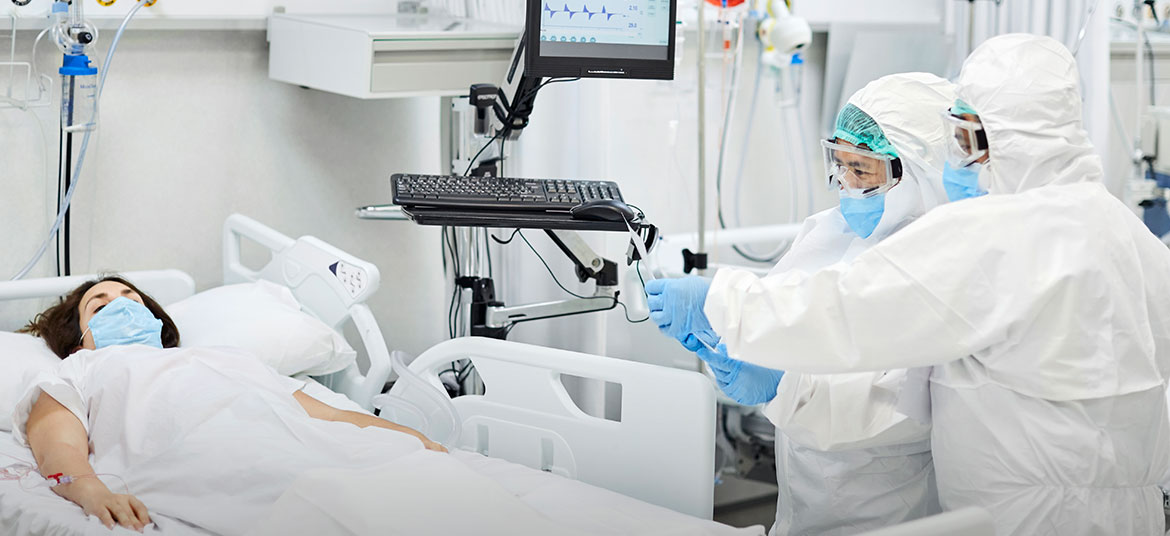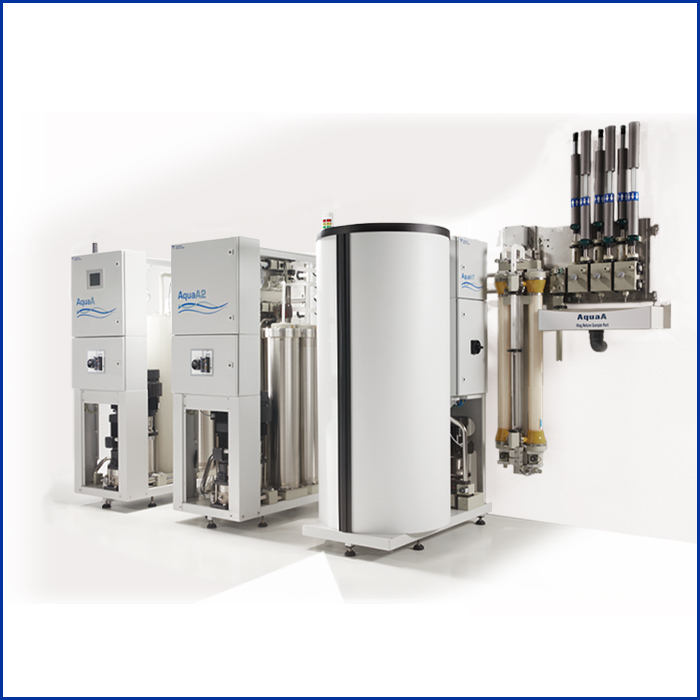
Prolonged Intermittent Kidney Replacement Therapy (PIKRT), an Option in the Continuum of Hospital Renal Care
For intensive care unit (ICU) patients requiring kidney replacement therapy (KRT), physicians have multiple treatment options. Continuous kidney replacement therapy (CKRT) is often the preferred modality in critically ill patients with hemodynamic instability,1 while more stable patients are frequently prescribed intermittent hemodialysis (IHD).2 But what is the right therapy for patients who fall somewhere in the middle of this spectrum?
One alternative to CKRT and IHD is a hybrid therapy known as Prolonged Intermittent Kidney Replacement Therapy, or PIKRT. This therapy is also known as prolonged intermittent renal replacement therapy, or PIRRT. Dr. Anitha Vijayan* discusses the therapy in the webinar presentation The Latest in Prolonged Intermittent Renal Replacement Therapy. Dr. Vijayan explains the benefits of PIKRT and how it is implemented at Barnes-Jewish Hospital in St. Louis where she is medical director of acute dialysis services.
“PIKRT is something that's in between IHD and CKRT,” explains Dr. Vijayan. “It's a therapy that provides clearance for a more prolonged period than a standard IHD treatment, but not an entire twenty-four hours (as with CKRT). The goal of PIKRT is to provide adequate replacement therapy that's dose equivalent to current recommendations for IHD and CKRT, without compromising efficacy or patient safety.”3
Comparing Kidney Replacement Therapies: Advantages of PIKRT
PIKRT — also known as PIRRT, sustained low-efficiency dialysis (SLED), and accelerated venovenous hemofiltration (AVVH) — may offer advantages to patients, healthcare providers, and hospitals, including:
- As effective as IHD2 and CKRT4
- Gentler2,4 and can be more frequent than conventional IHD
- Shorter than CKRT, allowing time for other therapies/procedures
- Can be administered overnight, leaving daytime hours for physical/occupational therapy
- May improve flexibility of resources and utilization5
Considering these benefits and its successful implementation at facilities throughout the country, PIKRT deserves consideration as a KRT treatment option in the ICU. While PIKRT offers some advantages, challenges such as lack of standardized dosing guidelines, especially regarding appropriate drug dosing, remain.
Gentler Therapy: IHD vs. PIKRT
IHD is an effective form of KRT, and it is typically administered three times a week for a few hours at a time. Because of its shorter duration and less-frequent dosing, IHD is intended to quickly draw large amounts of fluid off patients. High volume fluid removal (ultrafiltration) during dialysis may lead to low blood pressure and affect organ perfusion, possibly even delay recovery of kidney function.1
By comparison, PIKRT may be administered up to seven days per week, and therapy sessions are longer at six to twelve hours each. More frequency allows less fluid to be retained between sessions, and more prolonged therapy at lower dialysis flow rates than IHD helps draw fluid off slowly and more gently. This makes PIKRT a therapy option for patients who are ready to be weaned off CKRT but not stable enough for IHD.1
“The ultrafiltration rate can be tailored to whatever is required,” says Dr. Vijayan. “But basically, the point of the ultrafiltration rate during PIKRT is that you're removing the required fluid over a prolonged period compared to what would be done for IHD.”
According to Dr. Vijayan, patients on PIKRT at Barnes-Jewish Hospital are given eight to ten hours of therapy, usually five to six days a week, using the NxStage® System OneTM. The hospital uses diffusive clearance, with blood flow set at 300–400 ml/minute and dialysate at 4–6 liters/hour. Most patients complete a treatment with the NxStage System One without needing anticoagulation.
Early Mobilization: CKRT vs. PIKRT
Early patient mobilization in the ICU has been associated with improved outcomes, including reduction in ICU and hospital length of stay, more ventilator-free days, and better functional status.3 Patients on CKRT are immobilized, and it can be difficult to administer other forms of treatment to them, which may be detrimental to the recovery process.1
“Getting patients out of bed very early on is important,” says Dr. Vijayan. “There are a lot of benefits of early mobilization in the ICU, ranging from muscle strength to functional independence to decreased ICU delirium, as well as decreased duration of mechanical ventilation, improved six-minute walk, etc. And I think this is where PIKRT really is a benefit — so that you have one less machine to worry about when you're trying to walk these patients.”
PIKRT treatments can be performed at night, which allow patients to take advantage of physical and occupational therapy during the day, when staff is available, and be free for necessary examinations or procedures.
“We can have radiology and surgical procedures done during the day, and the patient can still get adequate kidney replacement therapy at night,” Dr. Vijayan explains. “And most of our patients sleep through their treatments, so there's less anxiety regarding dialysis.”
PIKRT and Resource Utilization: Making the Most of Staff and Equipment
In addition to giving patients more time for required therapy and allowing for early mobilization, PIKRT can free dialysis nurses from managing KRT in the ICU, allowing them to manage other patients and/or tasks. This increases resource utilization and may even decrease overtime cost.6
Dr. Vijayan points out that resource utilization is now critically important, given an acute nursing shortage recently exacerbated by the COVID-19 pandemic.7 Other situations that can create ICU surges and/or shortages in staffing and equipment include natural disasters, flu season, and emergencies such as water main breaks and power outages.
Shorter PIKRT treatment times also allow for the same machine to be surface cleaned and then utilized for additional patients and therapy sessions throughout the day. At Barnes-Jewish Hospital, clinicians have the additional advantage of administering therapies using the NxStage System One, which is capable of CKRT, PIKRT, and IHD treatments.
Guidelines and Efficacy: Comparing Therapies
Kidney Disease Improving Global Outcomes (KDIGO) — the global nonprofit organization developing and implementing evidence-based clinical practice guidelines in kidney disease — recommends complementary use of CKRT and intermittent therapies for most acute kidney injury (AKI) cases. Hemodynamically unstable patients as well as those who might have reduced intracranial pressure, generalized brain edema, or any other acute brain injury should receive CKRT, according to the organization.1
As hospitals and clinicians evaluate KRT options, the NxStage team is happy to provide information and training on PIKRT. To find out more about the benefits of PIKRT in the ICU, watch The Latest in Prolonged Intermittent Renal Replacement Therapy, a free on-demand webinar presented by NxStage Critical Care.
* Member of Scientific Advisory Board and paid speaker for NxStage Medical
INDICATIONS FOR USE:
The NxStage System One is indicated for the treatment of acute and chronic renal failure, or fluid overload using hemofiltration, hemodialysis, and/or ultrafiltration, in an acute or chronic care facility. The NxStage System One is also indicated for Therapeutic Plasma Exchange in a clinical environment. All treatments must be administered under a physician’s prescription, and must be observed by a trained and qualified person, considered to be competent in the use of this device by the prescribing physician. NxView is a computer-based touch screen user interface that provides online instructions for use, summarized system information, and remote access.
NxView is contraindicated as the sole method of monitoring a patient during treatment.8
RISK INFORMATION:
Kidney replacement therapy, as with any medical therapy, is not without risks. The decision of which therapy to use should be made by the physician, based on previous experience and on the individual facts and circumstances of the patient. There is no literature demonstrating one therapy is clinically better than another.9
- Kidney Disease: Improving Global Outcomes (KDIGO) Acute Kidney Injury Work Group. KDIGO Clinical Practice Guideline for Acute Kidney Injury. Kidney Int Suppl 2012;2(1):1-138.
- PROC (BAYL UNIV MED CENT) 2020;33(3):322–325; Duran and Concepcion 2020.
- Edrees F, Li T, Vijayan A. Prolonged Intermittent Renal Replacement Therapy. Adv Chronic Kidney Dis 2016;23(3):195-202.
- Gashti CN, Salcedo S, Robinson V, Rodby RA. Accelerated venovenous hemofiltration: early technical and clinical experience. Am J Kidney Dis 2008;51(5):804-10.
- Abdeen O, Mehta RL. Dialysis modalities in the intensive care unit. Crit Care Clin 2002;18(2):223-47.
- Schwenger V, et al. Sustained low efficiency dialysis using a single-pass batch system in acute kidney injury - a randomized interventional trial: the Renal Replacement Therapy Study in Intensive Care Unit Patients. Crit Care. 2012 Jul 27;16(4):R140.
- Anger MS, Mullon C, Ficociello LH, et al. Meeting the Demand for Renal Replacement Therapy during the COVID-19 Pandemic: A Manufacturer’s Perspective. Kidney360 2021;2(2):350-4.
- NxStage System One User Guide, NC4921 Rev. K 2021-10.
- Nash DM, Przech S, Wald R, O'Reilly D. Systematic review and meta-analysis of renal replacement therapy modalities for acute kidney injury in the intensive care unit. J Crit Care. 2017 Oct;41:138-144.
CAUTION: Federal law restricts this device to sale by or on the order of a physician.
© 2022 Fresenius Medical Care. All Rights Reserved. Fresenius Medical Care, the triangle logo, NxStage, System One, and NxView are trademarks of Fresenius Medical Care Holdings, Inc. or its affiliated companies. All other trademarks are the property of their respective owners. P/N 104770-01 Rev A 07/2022 / APM4567 REV B



